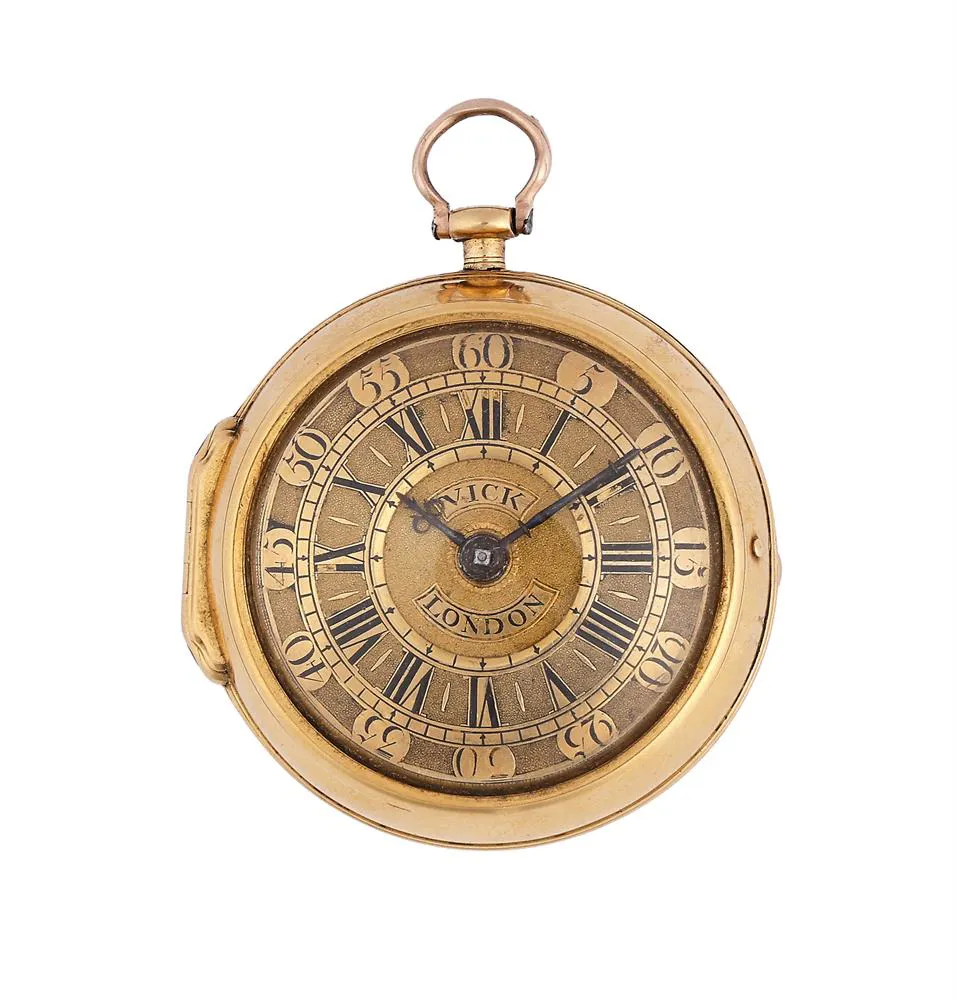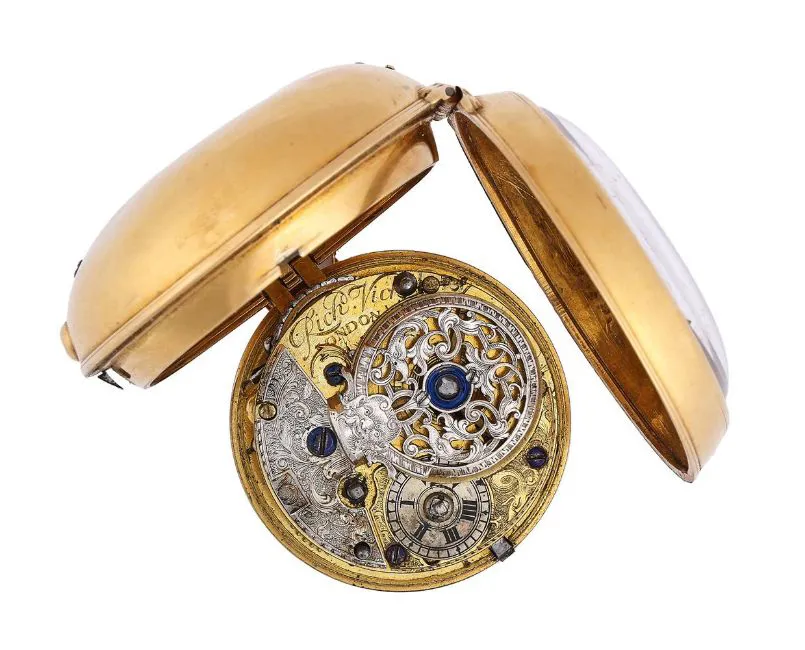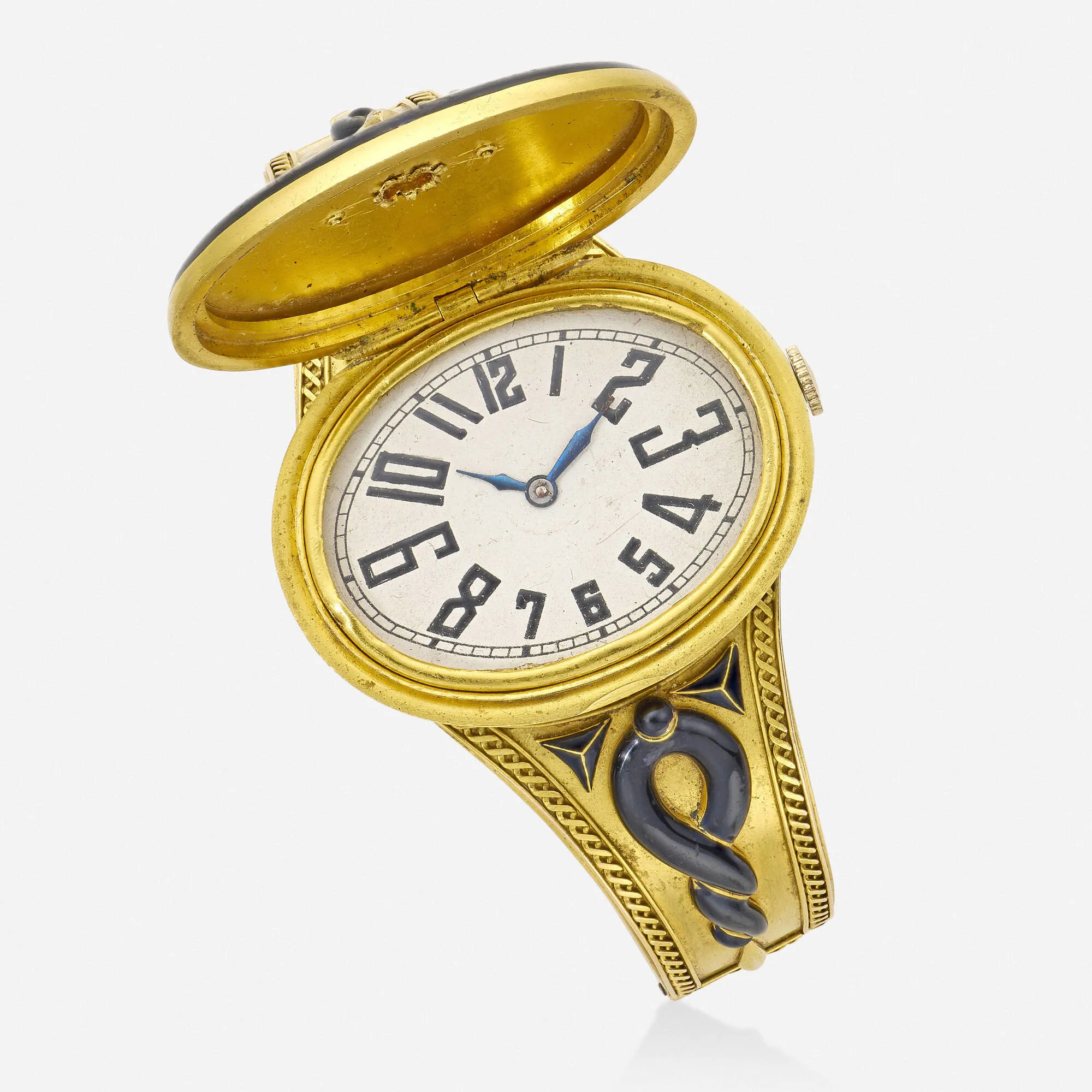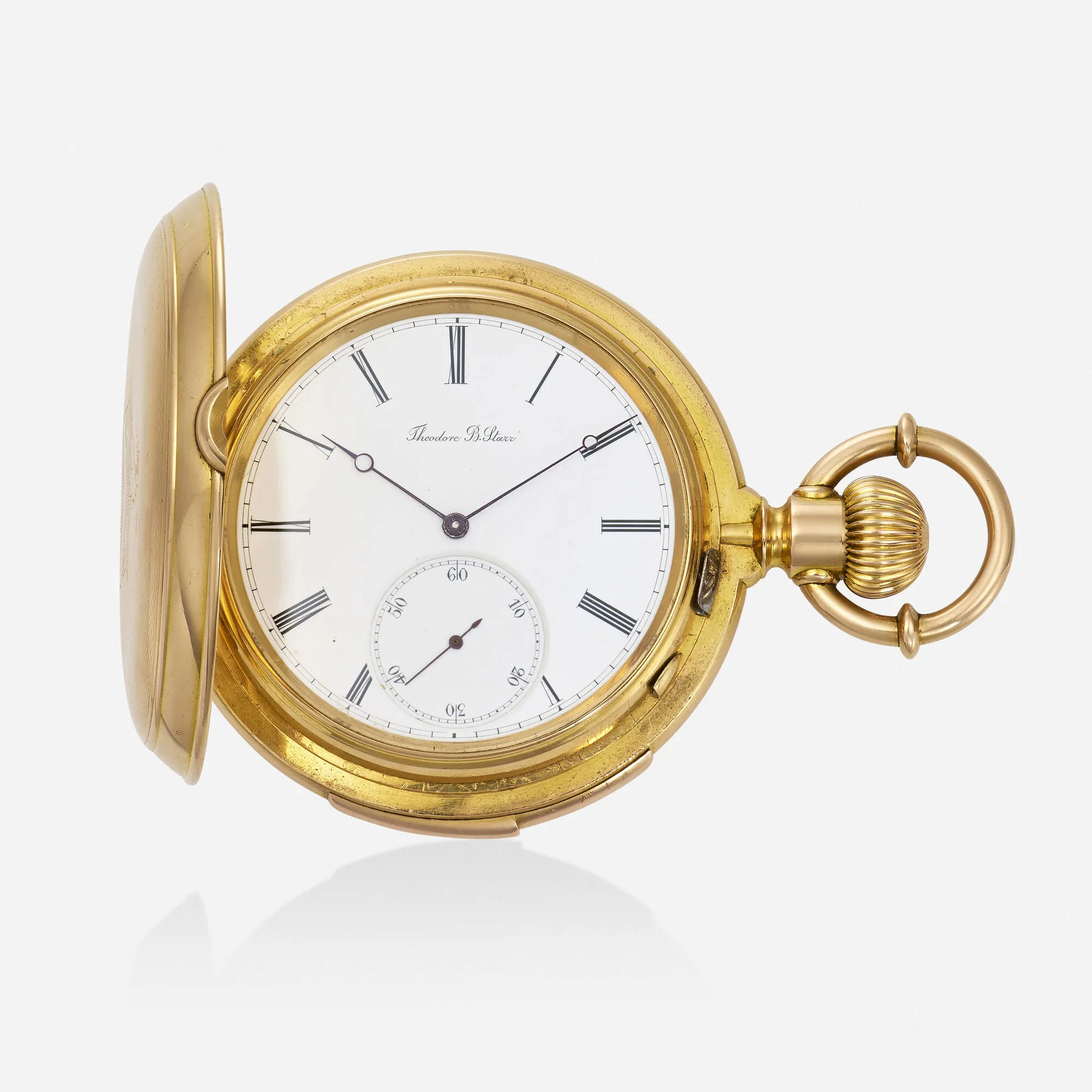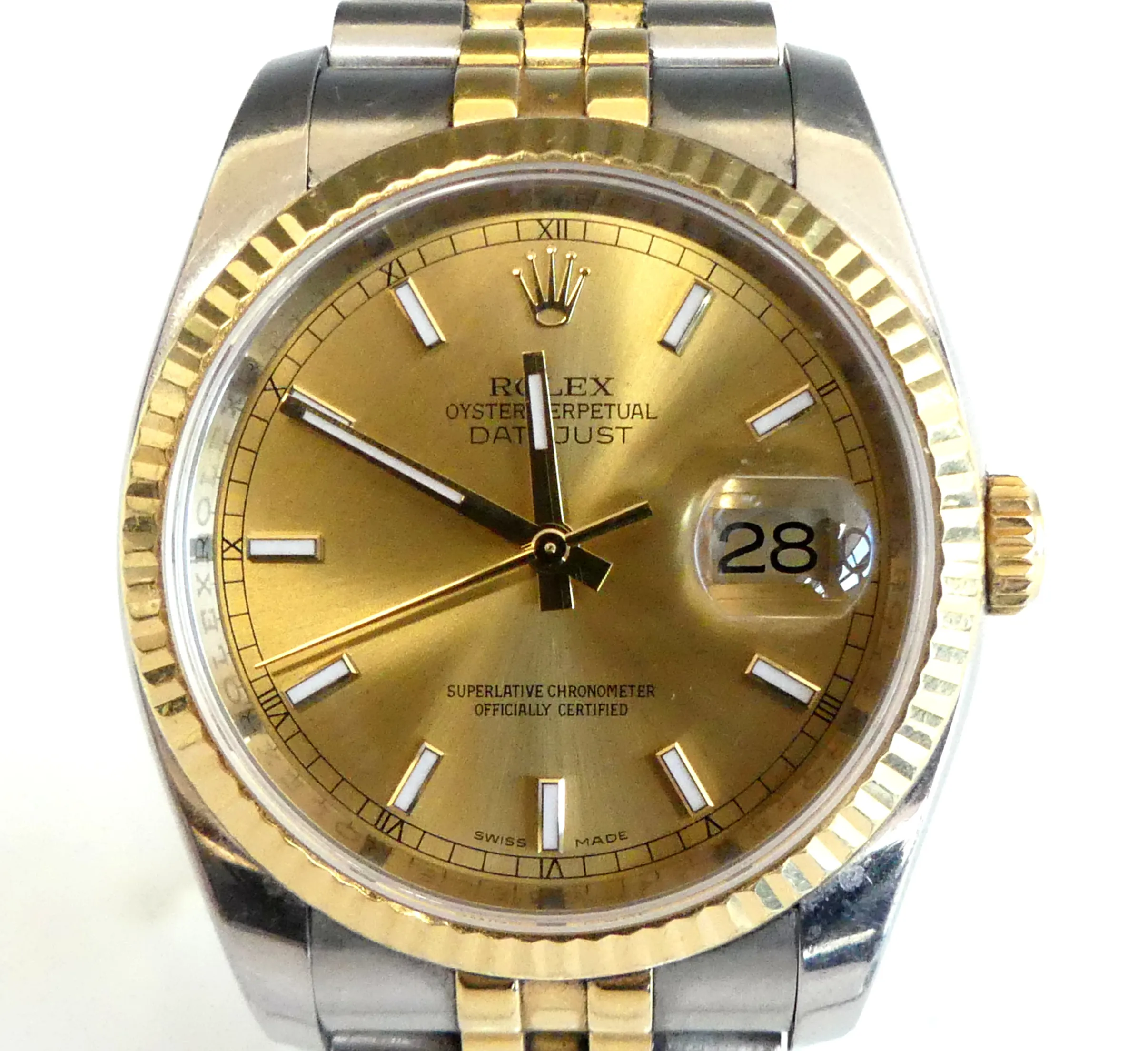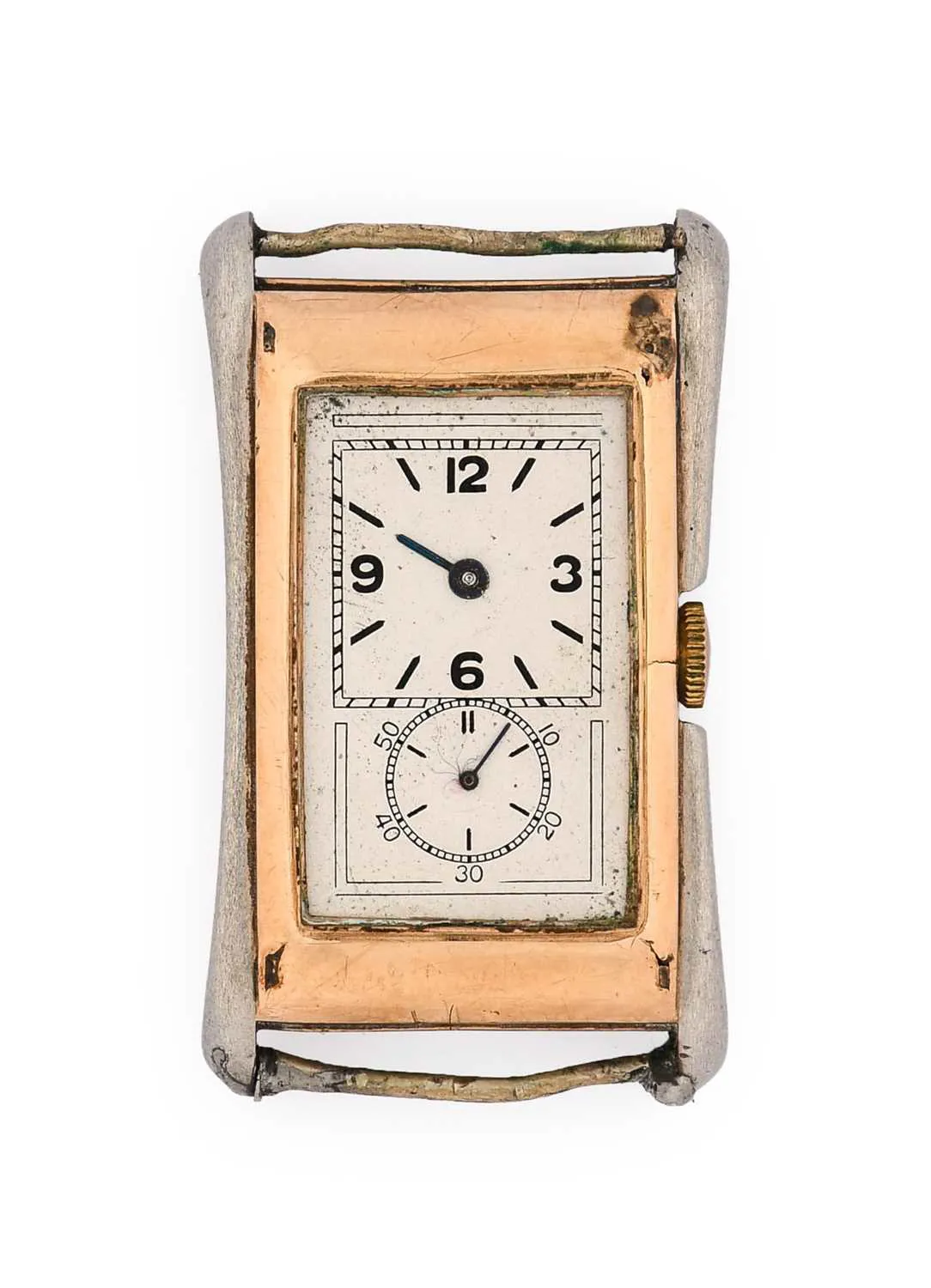Source:
Event:
Date:
Lot Number:
Condition: -
Year of Production: 1721
Case Size: 45mm
Case Material: Yellow gold
Dial Color: Gold
Bracelet/Strap: -
Movement Type: -
Box: No
Papers: No
Location: United Kingdom
Estimates 1,962 - 2,616 USD
Sale Price
Description
A FINE GEORGE I GOLD VERGE POCKET WATCH WITH CHAMPLEVE DIAL
RICHARD VICK, LONDON, CIRCA 1721
The gilt full plate fusee movement with four unusual turned baluster pillars pinned through the backplate, scroll-pierced stop-iron block and verge escapement regulated by sprung three-arm brass balance with Tompion type regulation, the backplate with fine silver symmetrical foliate strapwork scroll pierced and engraved balance cock with faceted diamond endstone and incorporating grotesque mask at the junction with the scroll engraved foot, flanked by silvered regulation disc set within adjacent applied scroll engraved brass panel infill opposing signature
Rich'd Vick, LONDON
, and indistinct number ...71, with gilt brass dust cover similarly signed
Rich'd Vick, LONDON
, the gold champleve dial with pair of relief chased curved panels engraved
VICK, LONDON
to the finely matted centre within Roman numeral chapter ring incorporating relief diamond lozenge half hour markers and cartouche Arabic five minute numerals to outer track, with fine sculpted blued steel
beetle and poker
hands, the gold consular case with suspension post and bow at twelve o'clock and slender moulded collar to circumference, indistinct marks for London 1721 makers
IB
.
The pillar plate 3.5cm (1.375ins) diameter, the case 4.5cm (1.75ins) diameter.
Provenance:
The Leonard Fuller Collection. Purchased from G.H. Bell, Winchester, 23
rd
June 1966 for £90.
Richard Vick is recorded on the Royal Collection Trust website as being bound to Richard Speakman on 31st January 1692 but was 'turned over' to Francis Asseline, a Freeman of the Haberdashers' Company until 1699. He was later turned over to Daniel Quare and admitted to the Clockmakers Company in April 1702. He received the Royal Warrant on 8th December 1722, in which he is described as 'Watchmaker and Clockmaker in Ordinary, in the room of Joseph Antram'. In 1729 he became the Master of the Clockmakers Company and had business premises in The Strand.
